Most business owners need to pay more attention to customer retention strategies over customer acquisition. Even though the cost to retain existing customers is 5-25 times less, depending on the industry, than the cost to acquire new customers. Also, it requires simple marketing techniques to be followed and a higher return on investment than adding new customers to the business. Marketers must focus on balancing customer retention and acquisition strategies to make their digital marketing campaigns successful. This blog will dive deeper into customer acquisition strategies, related metrics, and retention tactics.
What are the most critical factors for running a business? Definitely, customers, as without them, you cannot imagine a business, and there is nothing better for businesses than connecting with new customers. This is why businesses put most of their resources and efforts into customer acquisition which is undoubtedly one of the excellent digital marketing techniques.
What is customer retention and customer acquisition?
Customer retention refers to the strategies defined by businesses or brands to retain the business’s existing customers so that they continue using the products or services of the company. It is also a marketing technique to reduce the number of customer defections and prevent them from switching to competitors by running brand loyalty and customer loyalty programs.
Customer retention rate is the marketing metric that helps you calculate the number of customers you have after a certain period. It is also defined by the percentage of customer businesses retained after the end of a certain period. You can define the equation of the CRR as:
Customer Retention Rate (CRR) = (Total number of customers at the end of the period) – (New customers acquired during the period) / (Number of customers you have at the start of the Period) * 100
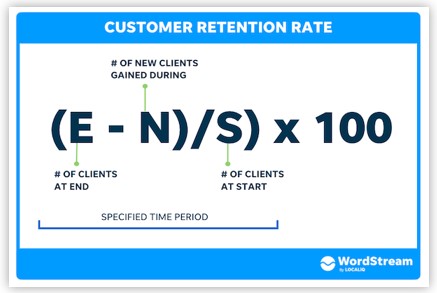
For example, if you have 1,200 customers at the end of the Q1; 1,000 customers at the start of the Q1, and 300 new customers you acquired during the Q1, then your CRR at the end of the Q1 will be calculated as:
CRR for Q1 = (1,200 – 300) / 1,000 * 100 = 90% CRR
Now with this equation, you easily get that during Q1, you had lost 100 customers as your CRR for this period is 90%.
One metric often used to understand customer retention is customer churn, also known as customer attrition, customer turnover, or customer defection. It denotes the loss of customers. In other words, the percentage of customers that stopped using your company’s products or services during a certain time frame. The next section discusses how to calculate the churn rate or its equation with other customer retention metrics.
Customer acquisition refers to the strategies businesses use to bring new customers to the company or convert prospects into the business’s regular customers. Customer acquisition cost (CAC) is used by businesses to calculate their profitability as it shows the total sales and marketing cost required to gain a new customer for the business. In the form of the equation, you can write it as:
CAC = (Cost of sales + Cost of marketing) / Number of new customers acquired

If your business spends $1,000 on sales and marketing of the products or services and acquired 200 new customers, then the cost of acquiring each customer will be $5.
Customer acquisition and retention are both marketing techniques serving different purposes. Retention is focused on building customer relationships and maximizing the revenue for the business; it also aims at increasing the profitability of the business and each customer, while customer acquisition strategy creates the foundation of the business and customers.
What are the different customer retention metrics and how to calculate them?
- Repeat customer rate – Repeat customer rate is one of the vital metrics in terms of customer retention. It measures the number of customers who come back to make repeat purchases. It is defined as the ratio of the number of customers that purchased more than once in a certain time frame to the total number of customers.
Repeat customer rate = Number of customers that purchased more than once / Total number of customers * 100
- Purchase frequency – Purchase frequency shows customer engagement with the business. It is the frequency describing how often a customer purchases your business’s products or services in a given time frame. It is the ratio of the number of orders placed to the unique customers.
Purchase frequency = Number of orders placed / Number of unique customers
- Average Order Value (AOV) – Average Order Value (AOV) is important for business owners to understand the business’s profitability. It shows the average amount of each order placed by a customer while purchasing from your website or in-store.
AOV = Total Revenue Earned / Total number of orders placed for a specific period.
- Customer lifetime value -The customer lifetime value, or CLV, is the measure of the total revenue a business can expect from a single customer over a period of its whole business relationship. It is defined in terms of purchase frequency and AOV as:
CLV = Purchase frequency x Average order value
- Churn rate – Customer churn rate is the percentage of customers a business loses in a specific period. Business owners try to keep their churn rate as low as possible to maintain profitability. It is calculated as:
Customer churn rate = (Number of customers at the start of the period) – (Number of customer at the end of the period) / (Number of customers at the beginning of that period) * 100
Importance of customer retention strategies
According to digital marketing experts, customer retention strategies are one of the best marketing techniques that quickly increase profitability in the business. For the company’s long-term growth, implementing customer retention and acquisition techniques by running brand loyalty or customer loyalty programs is considered one of the best practices. Customer trust in your business’s services and products is one of the core factors that turns a customer into a returning one. This comes from the better customer experience every time they purchase from you. Customer engagement with your business, brand loyalty, satisfied customers, etc., prove that they trust your brand and stick to it.
More prominent players in your field invest heavily in search engine optimization techniques and running PPC campaigns. It helps build brand awareness, lead generation, etc. You need to focus on the fact that the new customer stays in touch with the business long-term. Similarly, customer retention strategies benefit your business as existing customers do not have a second thought about the products or services offered. The below image from WordStream clears this fact.
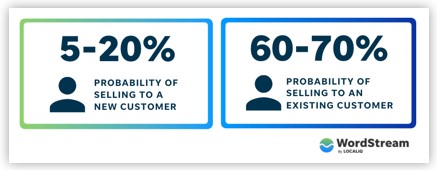
One of the major benefits of customer retention is word-of-mouth marketing, happy and satisfied customers are considered the best ways can do word-of-mouth publicity for your brand or business, and then you can realize the power of retention marketing.
At the same time, it is also true that retention marketing differs from business to business as newly opened companies need to focus on the customer acquisition strategy while others need to create a balance between these two. The below image from Shopify depicts a clearer picture of the situation.
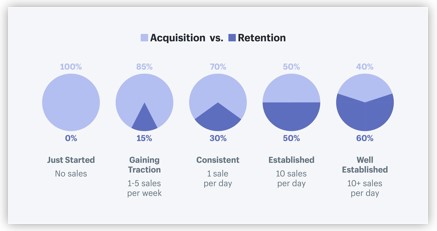
What are the top customer retention strategies?
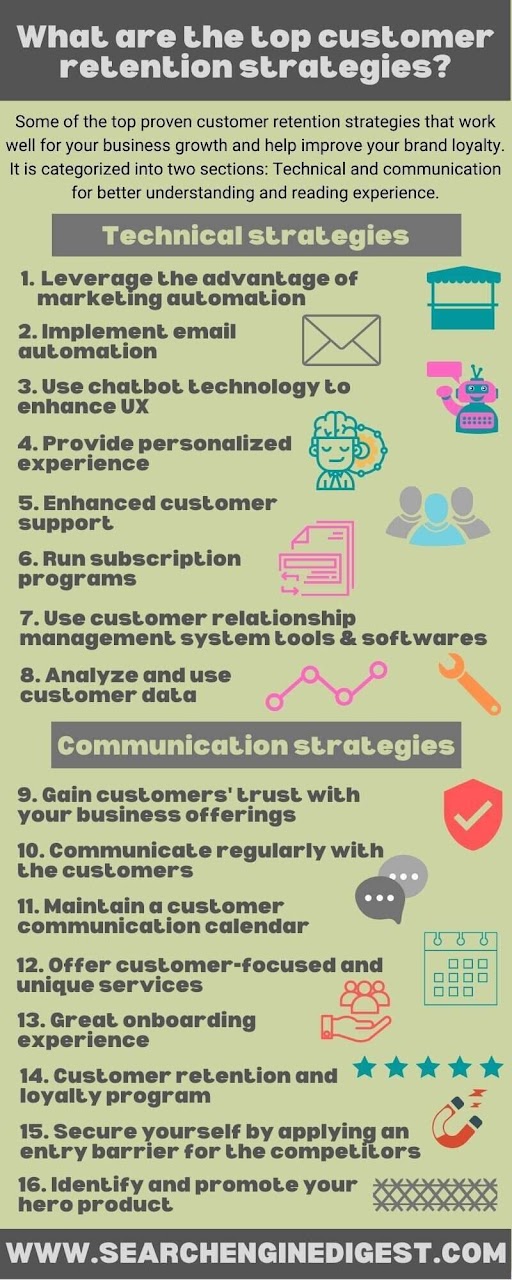
Here we are presenting some of the top proven customer retention strategies that work well for your business growth and help improve your brand loyalty. It is categorized into two sections: Technical and Communicational for better understanding and reading experience.
Technical strategies
- Leverage the advantage of marketing automation – Marketing automation is the software that effectively handles & organizes marketing tasks, identifies your potential customers, supports online campaigns, automates repetitive tasks, gathers insights, etc. You can also use these software & tools in the business to minimize human interventions, eradicate errors in the campaigns, save time, enhance customer experience, and remarketing purpose, increase customer retention rate, and increase your business’s revenue.
- Implement email automation – Email automation is an integral part of marketing automation which serves as one of the most powerful strategies for serving customers. Email marketing is considered the backbone of digital marketing. Thus, it is highly recommended to target your customers by sending timely follow-up emails, personalized emails, reminder emails, product recommendations based on the previous purchase, sending invitations for upcoming sales, new product promotions, etc.
- Use chatbot technology to enhance UX – Digital advertisers are well aware that there is no better strategy than communicating with the customers directly but serving customers individually is not an easy task; it also requires a large customer support team which proves to be expensive. Chatbot technology, which is already in use and super helpful, is the effective solution for the problem, which enhances the customer experience and is one of the vital customer retention strategies.

- Provide personalized experience – With the increase in technology, businesses are focusing on providing a personalized experience for customer engagement as the requirement varies from customer to customer. You should deliver highly relevant and personalized services that make customers feel the business cares about their needs and provide effective solutions. Use data and insights collected through surveys, reviews, purchase history, behavior, etc., to personalize your marketing strategy. There is no end to how deep your personalization strategy goes; the more you personalize, the more it will enhance customer experience and brand loyalty.
- Enhanced customer support – As we discussed above, communicating with customers is crucial. Chatbot technology is a tool that cannot talk to customers and provide solutions to all of their problems. This requires a human support team that interacts with them directly and provides real-time solutions; you can enhance the team’s efficiency by providing support through calls, live chats, help desk tools, etc.
- Run subscription programs – Customers can only stay connected to your business for a while if you have the proper customer engagement technique. Achieving brand loyalty by running customer loyalty programs is not an easy task. You have to focus on leveraging long-term benefits and binding customers to the business. This can be achieved by running subscription programs, referral programs, special treatments like membership, easy payment options for e-commerce like shop now pay later, EMIs, pay on delivery, etc.
- Use customer relationship management system tools & softwares – CRM tools or software help organize customer information, manage marketing campaigns, identify opportunities, track insights, etc. These insights can be used to identify problems and develop new strategies targeting potential customers. The competition analysis and remarketing techniques can also be implemented with the help of these tools.

- Analyze and use customer data – Any digital marketing strategy cannot be successful without analyzing the data gathered by the marketing tools and softwares. Insights collected from various sources are collectively examined to find any patterns in the data so that they can be used while framing marketing campaigns. Search history, shopping history, search behavior, etc., are studied to enhance personalized customer experience. Along with it, you should also track all your marketing metrics and campaigns in order to calculate their effectiveness.
Communication strategies
- Gain customers’ trust with your business offerings – There is no better strategy than gaining customers’ trust; once you have got it, you are mostly done. It builds with time but is one of the best customer retention strategies. Try to gain it by providing a best-in-class customer experience and business offerings.
- Communicate regularly with the customers – Never leave a chance to interact with your customers. Keep an eye on your social media handles to know what users are talking about your business. Ask for ratings, reviews & feedback and implement it to improve your products and services. With the use of social media platforms, this task becomes so easy and exciting.
- Maintain a customer communication calendar – Do not wait for a customer to call you and ask for your services. You have to go to the customers and tell them about your business’s products and services and how they solve their problems. Set a customer communication calendar and inform them about your new offers, products, services, promotions, launches, etc.
- Offer customer-focused and unique services – Complete market research and competitor analysis are crucial in understanding the customers’ needs in the market. Once you get it, you can target it with your hard-to-ignore features or offers. You only have to keep your offerings unique and maintain customer ease and convenience at the top of your priority list.
- Great onboarding experience – “The first impression is the last impression” is a very popular saying and fits perfectly in the marketing field. When a user makes a first purchase from your business, reward them with gifts, purchase scores or points, discounts, offers, etc., to make their onboarding experience great so that your business should be their first option for next time purchasing. Try to remove any hiccups in the onboarding experience and provide a smooth service.
- Customer retention and loyalty program – Customer retention and loyalty programs aim to retain existing customers and turn the prospects into regular buyers of the business’s offerings. Discount marketing, surprise rewards, referral programs, etc., motivate customers to purchase more in order to get valuable rewards. It attracts prospects to engage with the business and keeps your loyal customers happy.
- Secure yourself by applying an entry barrier for the competitors – Competitors are an integral part of the business and prove to be the greatest threats and opportunities at the same time. Once you start acquiring and retaining customers, you must define a strategy so that your competitors do not outrage you in your business. You can outsource competition analysis services for a complete competitor understanding and SWOT analysis in the business.
- Identify and promote your hero product – A hero product in the business is usually the top-selling and valuable product of the business, which becomes your brand’s identity. Many business owners fail to identify it and focus on other products, due to which you fall short in creating buzz among customers about your brand. Thus it is vital to identify your hero product and promote it, as there may be chances that the hero product is the reason for most returning business users.
Final thought
To successfully run a business and regularly retain & acquire customers, you need to understand the pain point or needs of the customers and develop your product according to them. Once ready with the product, you can jump on the customer acquisition and retention strategy. As you are the only one who can deal with the core & basics of the business, it becomes vital that you work on strategy very smartly. It helps retain existing customers in the long run and engage new customers.
References
-
306, 2024Understanding Google’s preference for crawling high-quality content
Crawling websites is [...]
-
2905, 2024All you should know about third-party cookies by Google
Cookies have revolutionized [...]
-
2405, 2024Helpful content update by Google to enhance website ranking
Google launched a [...]




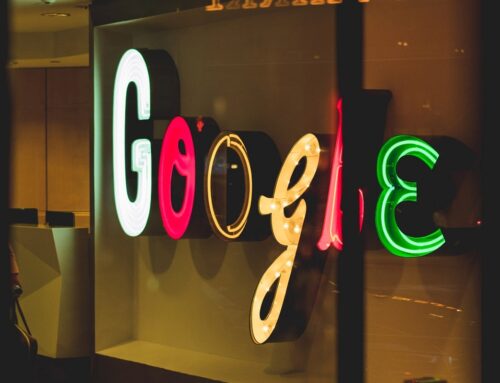
Leave A Comment